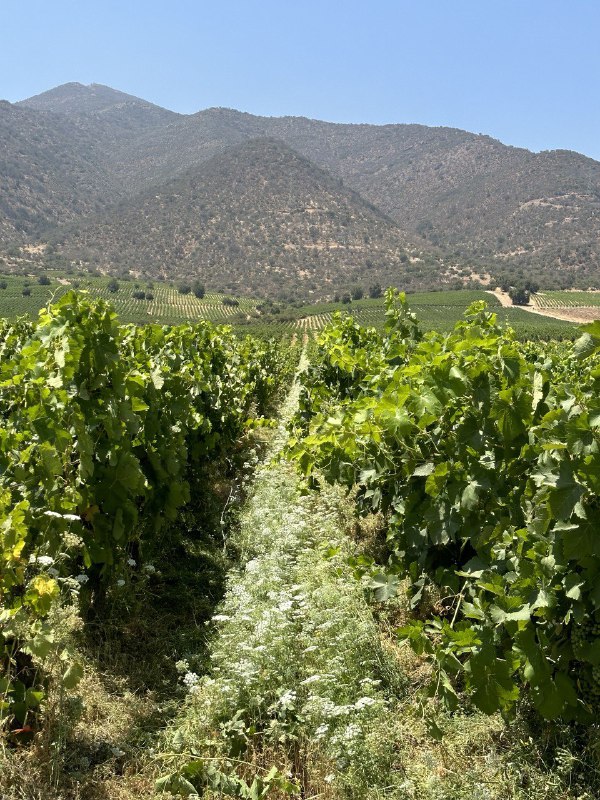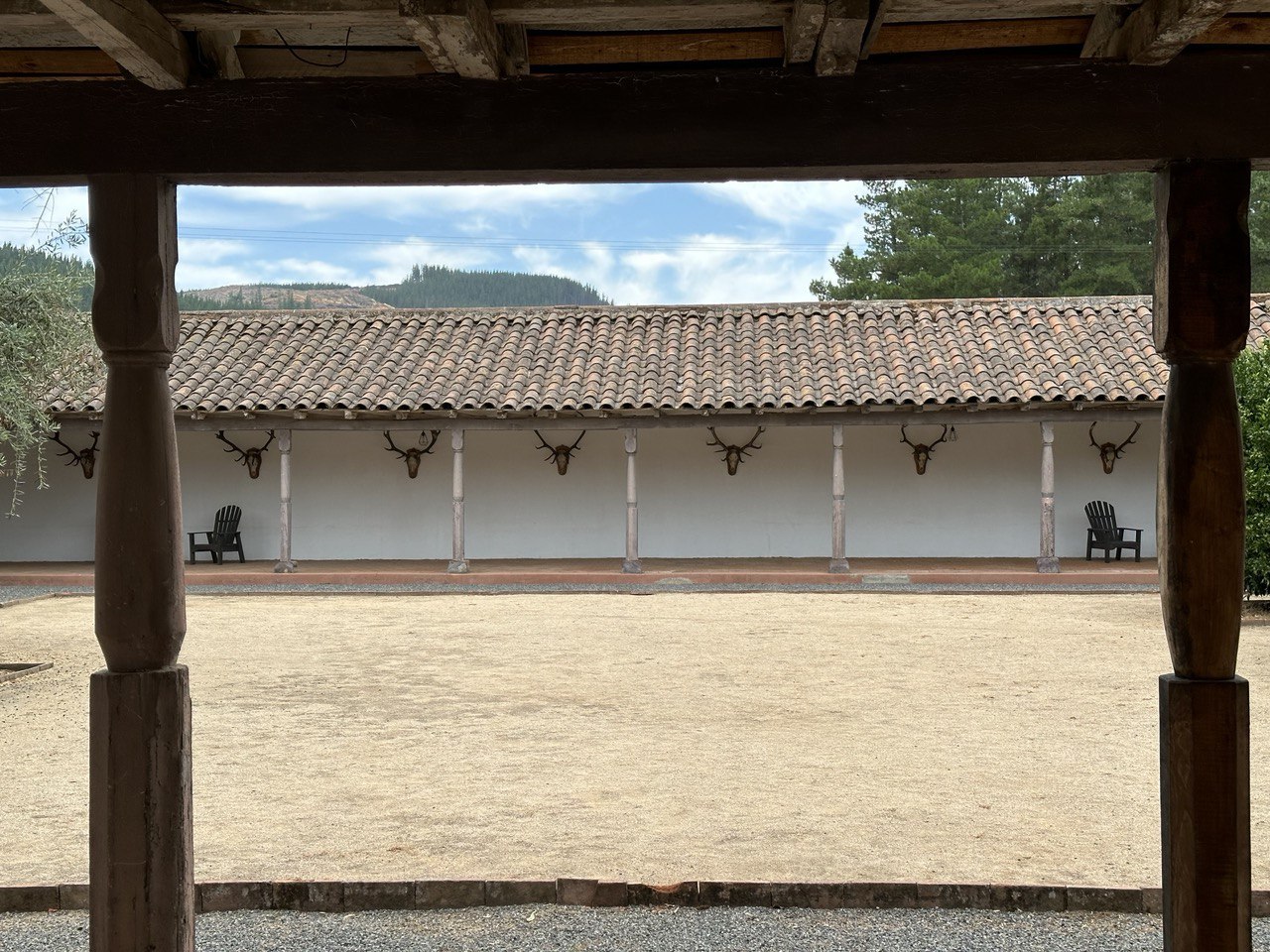Chile is one of the world’s top ten wine-producing regions. Its diverse climate and terroir attract the world’s best winemakers from Europe and the New World who craft award-winning wines. From cool-climate Pinot Noirs to the country’s adopted star Carménère, few places in the world produce wines as diverse and expressive as those that are made in Chile.
Since the 15th century, Chile has made excellent wines. The Spanish conquistadors were the first people to bring Vitis Vinifera grapes to Chile. It was then the Jesuits who cultivated it and spread it throughout the country. Although the country briefly had a reputation for producing inexpensive wines in bulk, it underwent a renaissance in the late 20th century that transformed the country’s wine industry into what it is today.
Six major wine regions in the country stretch from the Atacama Desert in the north to the fringes of Patagonia in the south. These regions enjoy the cooling effects of the Pacific Ocean and Andes Mountains with plenty of sunshine throughout the year. In this perfect climate, wine grapes become concentrated with flavor and give expert winemakers the perfect canvas for producing world-class wines.
The country’s 130,000 hectares of vineyards produce around 1.24 billion liters of wine annually. Red wine makes up approximately 74% of the country’s total production while white wines make up 26%.
The Central Valley Region
Chile’s Central Valley stretches north to south from the suburbs of the capital city Santiago to the rural forests of Talca. Its climate varies from the arid high-elevation slopes of the Andes to a Mediterranean climate closer to the coast.
This region is famous for producing Carménère, Cabernet Sauvignon, and Pais. Pais is the oldest grape varietal that is planted in the Americas. It produces light-bodied, juicy red wines that at one point were only produced to make wines in mass quantities. Today, winemakers have realized the enormous potential of this varietal. As a result, the old wild-looking vines of Pais are being tamed to make some of Chile’s most beloved high-quality wines.

San Fernando Los Lingues south of Santiago de Chile
Maipo Valley
The Maipo Valley is located in the dry hills south of Santiago. The valley’s high elevation means that it experiences scorching daytime highs and refreshingly cool nights. Combined with beautiful soils and a long history of winemaking tradition, the Maipo Valley is one of Chile’s most celebrated wine regions.
One of the standout wineries in this region is Besoain Wines. Winemaker Miguel Besoain spent a decade making wine at some of the top wineries in France and Germany. He brought his expertise back to Chile, where he produces some of the region’s finest Cabernet Sauvignon and Carménère blends. All of the grapes are hand-harvested when they have reached optimal ripeness and sugar concentration. After the grapes are crushed, they undergo fermentation in stainless steel tanks. Once fermentation is complete, the red wines are aged in French oak barrels that Besoain carefully selects himself.
Maule Valley
A few hours south of Santiago is the Maule Valley. Known for its striking Mediterranean climate and volcanic soils, the Maule Valley is where some of the finest Chilean wines are made. It is notoriously famous for its old vine wines that are made from Carménère and Pais grapes.
At the far eastern side of the valley along the hills surrounding Colbún Lake is Laberinto Wines. Here, chilly winds from the Pacific Ocean and the Andes Mountains meet. In this cool climate, Laberinto produces exceptional Pinot Noir, Chardonnay, Sauvignon Blanc, Pais, and Riesling. The winery’s Pais and Rieslings are fermented in clay amphora that’s over a century old. The team at Laberinto makes their wines with as little intervention as possible to ensure the preservation of the expression of their natural terroir.
Aconcagua and the Central Coast
Stretching towards the Pacific Ocean north of Santiago, the Aconcagua and Central Coast are another winemaking paradise. The climate ranges from arid to Mediterranean, with heavy morning fog and intense summer heat.
Here, several of the world’s top winemakers are growing highly rated Pinot Noir, Chardonnay, and Sauvignon Blanc. The landscape resembles the hills of California’s Central Coast, with new wine estates pushing Chilean wine-making to new heights.
Casablanca Valley
The Casablanca Valley may be famous for being ground zero for Chile’s wine tourism industry, but its wines are some of the country’s best. The valley sits in between the coastal mountains and receives low rainfall and plenty of sun.
The top producers in the region take advantage of the cool ocean breezes, sandy clay soils, and long growing season to make critically acclaimed wines. Some of the standout varieties include Pinot Noir, Chardonnay, and Sauvignon Blanc.
San Antonio Valley
The San Antonio Valley may be new on the Chilean wine stage, but its potential has not gone unnoticed. The valley stretches near the cold coastal waters of the Pacific Ocean. Its coastal proximity keeps the temperatures cool, with plenty of sunshine and a long growing season encouraging deeply concentrated fruit.
The San Antonio Valley’s winemakers take advantage of the intense sunshine and cool temperatures to make well-balanced Pinot Noir, Sauvignon Blanc, and Syrah wines.

Chilean Hacienda
The Dry Atacama and Coquimbo Regions
Few wine regions in the world are so extreme as the Atacama and Coquimbo Regions. This is one of the driest places on earth, with less than an inch of annual rainfall near the northern city of Copiapó.
Here, vineyards depend on irrigation from rivers such as the Copiapó and Turbio. The cooling effects of the high elevations and coastal breezes balance the region's intense sun, high heat, and long growing season to make excellent wines. Some artisanal producers make wine at 3,600 meters above sea level, taking advantage of the cooler mountain climate and intense sunlight.
Atacama
The Atacama Desert is one of the driest places on earth. However, winemakers in this challenging region produce excellent Syrah and Cabernet Sauvignon by taking advantage of the cool high-desert nights and water is sourced from the nearby Andes Mountains. The Atacama’s terroir is almost otherworldly. Dry barren mountains surround lush vineyards planted along the rivers that flow from the mountains to the foggy coast.
Coquimbo
To the south of the Atacama Desert is Coquimbo. This arid region is home to Chile’s Pisco industry. Pisco is a brandy distilled from grapes. Most of the Pisco made in Coquimbo is distilled from Muscat grapes.
Outside of Pisco, the region produces excellent Syrah, Chardonnay, and Sauvignon Blanc in the Elqui Valley and Limarí Valley subregions. These dry yet bountiful river valleys get plenty of year-round sun and cool nights that produce fruit that is rich and full of flavor.
The Wet South
Chile’s south is the extreme opposite of its desert north. This is the land of active volcanoes, temperate rainforests, and cool-climate grape varieties thrive here producing fruit with bracing acidity and beautiful aromas.
South Region
The heart of Chile’s wine-producing South Region is the Itata Valley. Amongst the pine and eucalyptus-covered hills are patches of ungrafted vines, many of them descendants from the original Spanish vines that were planted in the 16th century.
In this beautiful landscape that resembles Northern Portugal, winemakers such as Nicolás Pérez produce incredible wines from ungrafted vines. In addition to his winemaking project, he is a passionate oenologist and is also the winemaker for De Martino wines. Along with the ungrafted vines in the Itata Valley, Pérez makes wine from ungrafted vines in the Maipu Valley as well.
Austral
The Austral Region is the southernmost of Chile’s wine-growing regions. It is home to coastal forests, mighty rivers, and adventurous winemakers who are looking to produce Chile’s answer to New Zealand’s Pinot Noir and French Chardonnay.
In the Austral’s Osorno Valley and Cautín Valley subregions, large-scale and artisanal winemakers are putting the south on the map. This region is known for its use of traditional German and French styles of winemaking and for producing refreshing wines with beautiful acidity and floral aromas.
If you have not yet discovered Chilean wines, there is no better time to do so. The diverse richness of the country produces exceptional wines that are some of the best in the world.

